用户:Huyukui/沙盒
孔雀王朝 | |||||||||||||||||||||
|---|---|---|---|---|---|---|---|---|---|---|---|---|---|---|---|---|---|---|---|---|---|
| 前322年—前184年 | |||||||||||||||||||||
![历史学家文森特·阿瑟·史密斯(英语:Vincent Arthur Smith)[1]、R·C·马宗达(英语:R. C. Majumdar)[2]和历史地理学家约瑟夫·E·施瓦茨贝里(英语:Joseph E. Schwartzberg)[3]根据阿育王碑文中的位置信息绘制的孔雀帝国最大疆域范围](http://upload.wikimedia.org/wikipedia/commons/thumb/2/2c/Maurya_Empire%2C_c.250_BCE_2.png/250px-Maurya_Empire%2C_c.250_BCE_2.png) | |||||||||||||||||||||
![一些学者在他们的著作中,将孔雀帝国的国土概念化成“被大自治区们分割成的线状网络”。例如历史学家赫尔曼·库尔克(英语:Hermann Kulke)和迪特玛尔·罗特蒙特(英语:Dietmar Rothermund);[4]波顿·斯坦因(英语:Burton Stein);[5]大卫·卢登;[6]和罗米拉·塔帕(英语:Romila Thapar);[7]人类学家莫妮卡·L·史密斯(英语:Monica L. Smith)[8]和斯坦利·谭拜尔(英语:Stanley Tambiah);[7]考古学家罗宾·科宁汉(英语:Robin Coningham);[7]和历史人口学家蒂姆·戴森(英语:Tim Dyson)。[9]](http://upload.wikimedia.org/wikipedia/commons/thumb/c/c4/Maurya_Empire%2C_c.250_BCE.png/250px-Maurya_Empire%2C_c.250_BCE.png) | |||||||||||||||||||||
| 首都 | 巴塔利普特拉(今比哈尔邦巴特那) | ||||||||||||||||||||
| 常用语言 | 摩揭陀俗语 | ||||||||||||||||||||
| 宗教 | |||||||||||||||||||||
| 政府 | 君主专制(考底利耶所著政事论及罗阇曼荼罗[18]) | ||||||||||||||||||||
| 皇帝 | |||||||||||||||||||||
• 前322年–前298年 | 旃陀罗笈多 | ||||||||||||||||||||
• 前298年–前272年 | 宾头娑罗 | ||||||||||||||||||||
• 前268年–前232年 | 阿输迦(阿育王) | ||||||||||||||||||||
• 前232年–前224年 | 达沙拉沙 | ||||||||||||||||||||
• 前224年–前215年 | 三钵罗底 | ||||||||||||||||||||
• 前215年–前202年 | 舍利输迦 | ||||||||||||||||||||
• 前202年–前195年 | 提婆伐摩 | ||||||||||||||||||||
• 前195年–前187年 | 萨塔陀拉 | ||||||||||||||||||||
• 前187年–前184年 | 布柯陀罗多(巨车王) | ||||||||||||||||||||
| 历史时期 | 铁器时代 | ||||||||||||||||||||
• 征服难陀帝国 | 前322年 | ||||||||||||||||||||
• 弗沙蜜多罗·巽伽刺杀布柯陀罗多(巨车王) | 前184年 | ||||||||||||||||||||
| 面积 | |||||||||||||||||||||
• 总计 | 5,500,000平方公里 | ||||||||||||||||||||
| 前261年[19] | 3,400,000平方公里 | ||||||||||||||||||||
| 前250年[20] | 5,500,000平方公里 | ||||||||||||||||||||
| 货币 | 帕那 | ||||||||||||||||||||
| |||||||||||||||||||||
| 今属于 | |||||||||||||||||||||
| 孔雀帝国 (前322年–前180年) | ||||||||||||||||||||
|---|---|---|---|---|---|---|---|---|---|---|---|---|---|---|---|---|---|---|---|---|
|
||||||||||||||||||||
孔雀帝国是南亚次大陆上建立于铁器时代的地域广袤的强大政权,由旃陀罗笈多于公元前322年,以摩揭陀国为基础建立,一直延续到公元前185年。[21]孔雀帝国征服了印度河-恒河平原,并以其为中心,首都位于巴塔利普特拉(今巴特那)。在帝国中心之外,帝国的疆域取决于控制各城市的军队将领的忠诚度。[22][23][24] 在阿育王统治期间(约公元前268年-公元前232年),帝国控制了除最南南部以外的印度次大陆的主要城市枢纽和动脉。[21]它在阿育王统治后大约50年开始衰落,在公元前185年因弗沙蜜多罗·巽伽暗杀了布柯陀罗多,并在摩揭陀建立巽伽王朝而灭亡。
旃陀罗笈多·孔雀在政事论的作者考底利耶[25]的协助下组建了一支军队,并于约公元前322年推翻了难陀帝国。旃陀罗笈多击败了亚历山大大帝留下的总督们,迅速将他的势力向西扩展到印度中西部,到公元前317年,帝国完全占领了印度西北部。[26] 孔雀帝国随后在塞琉古-孔雀战争期间击败了塞琉古帝国的建立者和继业者塞琉古一世,从而获得了印度河以西的领土。[27][28]
在孔雀王朝时期,由于建立了一个单一而有效的金融、行政和安全体系,内部和外部的贸易、农业和经济活动在整个南亚得到了蓬勃的发展。孔雀王朝修建了从巴塔利普特拉到塔克西拉部分的大干道的前身。[29]羯陵伽战争后,帝国在阿育王的统治下经历了近半个世纪的中央集权统治。阿育王对佛教的信仰和对佛教传播的赞助佛教信仰扩展到斯里兰卡、印度西北部和中亚地区。[30]
孔雀王朝时期的南亚人口估计在1500万到3000万之间。[31] 帝国统治时期在艺术、建筑和碑刻等方面的取得了非凡的成就,[32]但与此同时,恒河平原的种姓制度得以巩固,另外印度-雅利安语支地区的妇女地位普遍下降。[33] 从考古学上看,孔雀王朝的统治时期南亚正处于北方磨光黑陶文化(NBPW)时代。政事论[34]和阿育王诏书是孔雀王朝时代的主要文献资料。鹿野苑的阿育王石柱柱头是印度共和国的国徽。
名称来源
[编辑]“Maurya(孔雀)”这个名字没有出现在阿育王碑文中,也没有出现在诸如麦加斯梯尼的印度史等同时代的希腊记述中,但有以下资料证明:[35]
- 楼陀罗达曼的朱纳格岩刻颂德文(约公元150年)中,在旃陀罗笈多和阿育王的名字前加上了“Maurya(孔雀)”的前缀。[35]
- 往世书(约公元4世纪或更早)使用Maurya(孔雀)作为王朝称谓。[35]
- 佛教文献指出,旃陀罗笈多属于释迦族的“Moriya”氏族,是释迦牟尼所属的部落。[35]
- 耆那教的文本指出,旃陀罗笈多是一位皇家孔雀主管(mayura-poshaka) 的儿子。[35]
- 泰米尔桑加姆文学也将它们称呼为“moriyar”,提及他们既难陀人之后统治印度[36]
- 公元12世纪的孔塔拉碑文(来自北迈索尔的班达尼克镇)按时间顺序提到“Mauryya”是统治该地区的朝代之一。[37]
根据一些学者的说法,迦罗卫罗的诃提衮帕石刻(公元前2世纪至公元前1世纪)将孔雀帝国的时代称为“Muriya Kala”(孔雀时代),[38]但这种解读存在争议:其他学者,例如碑铭研究家D·C·萨卡尔将这句话解读为"mukhiya-kala(“主要艺术”)。[39]
根据佛教传说,王朝王室的祖先曾定居在孔雀(巴利语中称为mora)聚集的地区。因此,他们被称为“Moriyas”,字面意思是“来自孔雀之地”。另据佛教文献记载,王室的祖先们建造了一座名为“Moriya-nagara”(孔雀之城)的城市,之所以得名,是因为它是用“像孔雀脖子一样颜色的砖块”建造的。[40]
正如佛教和耆那教传说中提到的那样,王朝与孔雀的联系似乎得到了考古证据的证实。例如,在南丹加尔的阿育王柱上发现了孔雀雕像,以及在桑吉大佛塔内发现了几座孔雀雕塑。基于这些证据,现代学者推测孔雀可能是该王朝的象征。[41]
还有一些作者,例如杜底拉奇(一位曼陀罗克夏沙的点评人)和一位毗湿奴往世书的注释者,声称“Maurya”这个词源自"Mura",是第一位孔雀王的母亲。然而,往世书本身并没有提到"Mura",也没有提及难陀王朝和孔雀王朝之间的任何联系。[42]杜底拉奇对这个词的派生似乎是他自己的发明:根据梵文规则,女性名字Mura(IAST:Murā)的派生词是“Maureya”;“Maurya”一词只能来自男性的“Mura”。[43]
历史
[编辑]建立
[编辑]在孔雀帝国之前,难佗帝国统治着印度次大陆的大部分地区。通过对印度列国的征服,难陀帝国成为一个地域广大、军力强盛的、经济繁荣的帝国。据传说,考底利耶前往难佗帝国首都摩揭陀的巴塔利普特拉,并在那里成为帝国的大臣。然而,考底利耶受到难陀王朝的皇帝达那·难陀的侮辱,考底利耶发誓报仇,要摧毁难陀帝国。[44]为了保住性命,他不得不逃到著名的学术中心塔克西拉当教师。在一次旅行途中,考底利耶目睹了一队年轻人在玩战争游戏。其中,年轻的旃陀罗笈多给他留下了深刻的印象,认为在他身上发现的资质,使得他有可能成为一个合格的统治者。
与此同时,亚历山大大帝正在带领他的军队攻进旁遮普地区。他的军队在比亚斯河与另一只军队进行了激战后,爆发了叛乱,拒绝进一步向东推进。亚历山大回到巴比伦,将他的大部分部队重新部署在印度河以西。亚历山大于公元前323年在巴比伦去世,不久后,他的帝国分裂为由他的将军们领导的若干独立王国。[45]
孔雀帝国由旃陀罗笈多和其导师考底利耶在摩揭陀地区建立。考底利耶将旃陀罗笈多带到了塔克西拉,并传授他治国之道。旃陀罗笈多招募军队,吞并了一些当地的军事共和国,例如曾经抵抗亚历山大帝国的游得希亚。孔雀军队迅速崛起,成为印度次大陆西北部主要的地方势力。孔雀军队随后击败了马其顿人建立的总督政权。[46]古希腊历史学家尼阿库斯、阿尼西里乌斯和阿里斯托布鲁斯留下了大量的有关孔雀帝国的历史资料。[47]当时希腊将军欧德摩斯和培松统治着印度河流域,大约公元前317年,旃陀罗笈多·孔雀(在他的顾问考底利耶的帮助下)击败并驱逐了希腊总督,随后将印度河流域置于他的摩揭陀政权的统治之下。[26]
旃陀罗笈多·孔雀的祖先笼罩在神秘和争议之中。一方面,许多古印度文献,例如维沙哈达塔的剧作曼陀罗克夏沙(罗克夏沙的印戒——罗克夏沙是摩揭陀的宰相)描述了他的皇室血统,甚至将他与难陀家族联系在一起。早期的佛教典籍《大般涅槃经》中则提到了一个被称为孔雀家族的刹帝利氏族。然而,如果没有进一步的历史证据,任何论点都很难被证实。旃陀罗笈多在早期的希腊历史记录中,被称为“山德罗克托斯”。据说他年轻时见过亚历山大。[48]另外,传说考底利耶见到过难陀国王,激怒了他,然后九死一生的逃了出来。[49]
征服难陀帝国
[编辑]关于旃陀罗笈多与难陀帝国之间的战争细节已不可考,而产生于几个世纪后的那些历史传说也说法不一。佛教、耆那教和印度教的文献称当时摩揭陀由难陀王朝统治,在考底利耶的辅佐下,旃陀罗笈多征服了难陀帝国。[51][52][53]旃陀罗笈多和考底利耶的军队首先占领了难陀的外围领土,最后围攻难陀首都巴塔利普特拉。在佛教的典籍中,孔雀王朝很轻松的就取得了战役的胜利,但在印度教和耆那教文献中,由于难陀王朝拥有一支强大且训练有素的军队,整场战役进行的非常激烈。[54][52]
佛教典籍《大史》和耆那教典籍《附录》记载了旃陀罗笈多军队袭击难陀首都的失败。[55]旃陀罗笈多和考底利耶随即调整了策略,从难佗帝国的边境开始逐步蚕食,占领了难陀首都周边的领土。[56]然后,他们在占领地上部署驻军巩固统治,并最终围困了难陀首都巴塔利普特拉。达那·难陀最终失败,[57][58]这次战役在剧本曼陀罗克夏沙中进行了戏剧化,加了一些其他版本的考底利耶-旃陀罗笈多传说中没有的情节。由于这些差异,托马斯·施特劳曼认为曼陀罗克夏沙中大部分的内容是虚构的,或仅仅只是传说,没有任何历史依据。[59]拉妲·库穆德·穆克吉同样认为曼陀罗克夏沙的内容缺乏历史依据。[60]
有些传说称难陀国王被打败、废黜并流放,而佛教的文献则声称他被杀害了。[61]随着难陀的失败,旃陀罗笈多·孔雀建立了孔雀帝国。[62]
旃陀罗笈多·孔雀
[编辑]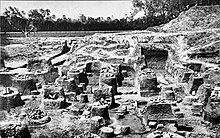

公元前323年亚历山大大帝之死后,旃陀罗笈多于公元前305年发动了一系列战役,占领了印度河流域和印度西北部的一系列总督区。[63]亚历山大的剩余部队被击溃后,向西退却,同时塞琉古一世(胜利者)带领其属下部队奋力保卫这些领土。历史资料中关于这场战役的细节记载并不多。最终塞琉古也被击败,并带领部队撤退到阿富汗山区。[64]
两位统治者于公元前303年缔结了和平条约并联姻。根据合约条款,旃陀罗笈多得到了帕罗帕密萨代(剑浮沙和健驮逻)和阿拉霍西亚(坎大哈)和格德罗西亚(俾路支斯坦)等三个总督区。塞琉古一世得到了500头战象,这些战象日后在公元前301年的伊普苏斯战役中,为战胜西方希腊化国王联军发挥了决定性作用。建立了外交关系后,一些希腊人,如历史学家麦加斯梯尼、德伊马科斯和狄奥尼西奥斯留在了孔雀王朝的宫廷。[65]
麦加斯梯尼是旃陀罗笈多·孔雀宫廷中著名的希腊大使。[66] 根据阿里安的说法,麦加斯梯尼大使(约公元前350年至公元前290年)住在阿拉霍西亚,并经常前往巴塔利普特拉。[67]麦加斯梯尼将孔雀帝国的社会描述成一个热爱自由的社会,这打消了塞琉古入侵孔雀帝国的想法,当然,塞琉古做出决定的底层原因是,入侵成功的可能性也比较低。之后的几年里,塞琉古的继任者们根据归国旅行者的类似叙述,继续与孔雀帝国保持良好的外交关系。[63]
旃陀罗笈多在巴塔利普特拉建立了一个强大的中央集权国家,据麦加斯梯尼称,该城“拥有64座门和570座的木城墙所包围”。埃里亚努斯虽然没有明确引用麦加斯梯尼的描述也没有提到巴塔利普特拉,但他将印度的宫殿描述为“比波斯在苏萨或埃克巴坦那的皇宫更加富丽堂皇”。[68]这座城市的建筑风格似乎与当时的波斯城市建筑风格有许多相似之处。[69]
旃陀罗笈多的儿子宾头娑罗将孔雀帝国的统治扩展到印度南部。桑加姆文学中著名的泰米尔泰米尔诗人马穆纳尔描述了德干高原以南的泰米尔国家是如何被由卡纳塔克人组成的孔雀帝国军队征服的。马穆拉纳尔指出,瓦杜加尔人(居住在紧邻泰米尔纳德北部的安得拉-卡纳塔克地区)构成了孔雀王朝军队的先锋。[36][70]旃陀罗笈多的宫廷里还有一位希腊大使,名叫德伊马科斯。[71]按照普鲁塔克的说法,旃陀罗笈多·孔雀征服了整个印度,而按照查士丁的说法,旃陀罗笈多·孔雀“拥有印度”。这些说法得到了泰米尔桑加姆文献的证实,其中提到孔雀王朝与他们的南印度盟友的入侵,以及在今泰米尔纳德邦蒂鲁内尔维利地区的波迪伊尔山击败他们的敌人。[72][73]
而后,旃陀罗笈多放弃了王位,跟随他的耆那教老师巴德拉巴胡皈依了耆那教。[74][75][76]据传说,他先是在什拉瓦纳贝拉戈拉做了几年苦行僧,然后依据耆那教的萨莱克哈那仪式,绝食而死。[77]
宾头娑罗
[编辑]
宾头娑罗是孔雀帝国建立者旃陀罗笈多的儿子。这件事被若干《往世书》和《大史》等材料的证明。[78]其本人的存在也被一些佛教经典例如《岛史》和《大史》(“Bindusaro”),耆那教经典例如《附录》以及印度教经典例如《毗湿奴往世书》("Vindusara")等所证明。[79][80]根据12世纪耆那教作家金月的附录记载,宾头娑罗的母亲的名字是杜达罗。[81]一些希腊的文献资料,提到他的时候,称他为“阿米托罗刹斯特”或其变体。[82][83]
历史学家乌平德·辛格估计宾头娑罗于公元前297年左右登上王位。[70]年仅22岁的宾头娑罗继承了一个庞大的帝国,该帝国由现在的印度北部、中部和东部地区以及阿富汗和俾路支斯坦的部分地区组成。宾头娑罗将帝国版图扩张到了印度南部,最南端到达了今天的卡纳塔克邦的地区。他将十六大国征服,占据几乎整个印度半岛(据说他还征服了“两海之间的土地”——孟加拉湾和阿拉伯海之间的半岛地区)。宾头娑罗没有征服那些友好的泰米尔王国,包括伊拉姆切琴尼治下的朱罗王国,潘地亚王国和哲罗王国。除了这些南部国家,羯陵伽国(今天的奥里萨邦)是印度唯一一个没有被纳入宾头娑罗帝国的王国。[84]羯陵伽国后来被宾头娑罗的儿子阿育王征服,阿育王在父亲统治期间担任邬阇衍那的总督,这凸显了邬阇衍那的在孔雀帝国中的重要性。[85][86]
宾头娑罗和他的父亲旃陀罗笈多以及他的儿子阿育王一样,生平并没有被记录下来。考底利耶继续担任首相。据曾经访问过印度的中世纪西藏学者多罗那他的描述,考底利耶帮助宾头娑罗“消灭了十六大国的国王和贵族,成为了东西海之间领土的绝对主宰”。[87]在他的统治期间,塔克西拉人两次起义。第一次叛乱源于他的长子修私摩管理不善。第二次叛乱的原因不明,并且宾头娑罗生前并没有将这次叛乱镇压下去。直到宾头娑罗死后,这次叛乱才被阿育王粉碎。[88]
宾头娑罗与希腊世界一直保持着友好的外交关系。德伊马科斯是塞琉古皇帝安条克一世在宾杜萨拉宫廷的大使。[89]据狄奥多罗斯的记载,巴塔利普特拉的国王(孔雀王朝的首都巴塔利普特拉)曾经热情款待过一位希腊的作家亚姆布鲁斯。这位国王通常被认为就是宾头娑罗。[89]另外据普林尼记载,埃及国王爱手足者也曾经派过一位名叫狄奥尼西奥斯的使者前往印度。[90][91]根据夏连特拉·纳特·塞恩的说法,这件事似乎发生在宾头娑罗的统治时期。[89]
与他的父亲旃陀罗笈多(后来改信耆那教)不同,宾头娑罗信奉正命论教派。宾头娑罗的上师平加尔瓦察(贾纳贾纳)是一位正命论教派的婆罗门。[92]宾头娑罗的妻子,苏巴让吉王后(达摩王后/阿加马赫西往后)同样是一位来自占普里(今天的巴加尔布尔)的信奉正命论教派的婆罗门。[93]宾头娑罗因向婆罗门寺院提供多项资助而备受赞誉,被称为婆罗门信徒(Brahmana-bhatto)。[94]
历史证据表明,宾头娑罗死于公元前270年代。根据乌平德·辛格的说法,宾头娑罗死于公元前273年左右。[70]阿兰·丹尼罗则认为他死于公元前274年左右。[87]夏连特拉·纳特·塞恩认为他在公元前273年至272年左右去世,他死后,孔雀王朝经历了四年的继承权斗争,之后他的儿子阿育王在公元前269年至268年左后成为皇帝。[89]根据《大史》的说法,宾头娑罗在位28年。[95]而在伐由往世书中,旃陀罗笈多的继任者名叫“Bhadrasara”,统治了25年。[96]
阿育王
[编辑]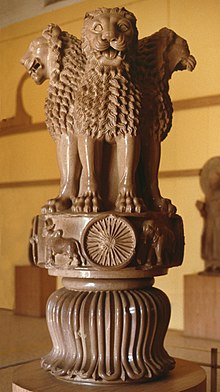

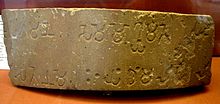
作为年轻的王子,阿育王(公元前272-公元前232年在位)是一位出色的指挥官,他镇压了邬阇衍那和塔克西拉的叛乱。作为君主,他雄心勃勃,气势逼人,重新确立了帝国在印度南部和西部的优势。他对羯陵伽的征服(公元前262-公元前261年)是他一生中最重要的事件。阿育王在羯陵伽建造要塞并部署兵力防御,以此来威慑周边大片区域。[97]阿育王的军队成功地击败了羯陵伽的官军和民兵,估计有100000名士兵和平民在残酷的战争中丧生,其中包括10000多名阿育王自己的军队。数十万人受到战争的波及。阿育王亲眼目睹这场灾难,开始感到懊悔。完成了对羯陵伽的吞并后,阿育王接受了佛教的教义,放弃了战争和暴力。他派传教士周游亚洲,将佛教传播到其他国家。
为了遵循不害的原则,阿育王禁止了狩猎和暴育活动,结束了契约和强迫劳动(在饱受战争蹂躏的羯陵伽,有数千人被迫从事苦役和奴役)。阿育王一边维持着庞大而强盛的军队,维护和平和权威,一边扩大了与亚洲和欧洲各国的友好关系,并赞助了佛教传播。他在全国范围内开展了大规模的公共工程建设。40多年的和平、和谐与繁荣使阿育王成为印度历史上最成功和最著名的君主之一。他现在仍然是印度理想化的人物。
刻在石头上的阿育王诏书,遍及整个次大陆。西至阿富汗,南至安得拉(内洛尔区),阿育王的诏书阐述了他的政策和成就。诏书主要是用普拉克里特语书写的,但其中有两篇是用希腊语书写的,一篇是用希腊语和阿拉姆语书写的。阿育王诏书将希腊人、剑浮沙人和健驮逻人统称为帝国边境民族。诏书还记录了阿育王曾派使者前往西方,最远到达过地中海区域的希腊城邦。诏书还记述了当时希腊世界的统治者们都接收了阿育王的传教,其中包括安条耶伽王(安条克)、托勒马耶王(托勒密)、安提基那王(安提柯)、马卡王(马加斯)和亚历基耶山大拉王(亚历山大)。诏书还准确地定位了他们的领土“在600由旬之外”(1由甸约7英里),对应印度中部和希腊之间的距离(大约4,000英里)。[98]
衰败
[编辑]阿育王之后的50年,孔雀王朝的继任君主们都能力平平。阿育王的继任者是他的孙子达沙拉沙·孔雀。阿育王的儿子中没有一个可以登上皇位。他的长子摩哂陀一直在致力于传播佛教。鸠那罗·孔雀是盲人因此无法登上皇位,卡鲁瓦基的儿子帝瓦拉比阿育王更早去世。另一个儿子伽罗卡并没有太多的记载。
帝国在达沙拉沙的统治下失去了许多领土,其本人的皇位也在随后被鸠那罗的儿子三钵罗底夺取。在三钵罗底之后,孔雀王朝逐渐地失去了许多领土。公元前180年,布柯陀罗多·孔雀在阅兵中被他的将军弗沙蜜多罗·巽伽刺杀,而布柯陀罗多并没有继承人。至此,伟大的孔雀帝国终于结束,巽伽帝国的兴起。
造成帝国衰落的原因有很多,包括:阿育王的继承者们普遍平庸;帝国被一分为二;帝国统治区域内的某些地区逐步实现了独立,例如索法伽色努斯统治下的地区;权力完全掌握在少数人的手中,造成了政府的头重脚轻;民族意识的缺失;[99]帝国的庞大造成了行政效率的低下;希腊-巴克特里亚王国的入侵。
一些历史学家,如 H‧C‧雷乔杜里,认为阿育王的和平主义破坏了孔雀帝国的“尚武传统”。但也有其他的一些历史学家,如罗米拉·塔帕,则认为阿育王的和平主义的范围和影响被“严重夸大了”。[100]
巽伽政变(公元前185年)
[编辑]据《阿育王传》等佛教史料记载,刺杀布柯陀罗多和巽伽帝国的崛起引发了对佛教徒的宗教迫害[101]和印度教的复兴。根据约翰·马歇尔爵士的说法,[102]弗沙蜜多罗可能是宗教迫害的主要操盘手,因为后续巽伽王朝的君主们似乎都是支持佛教的。其他的一些历史学家,如艾蒂安·拉莫特[103]和罗米拉·塔帕[104]等,认为缺乏直接的考古证据支持对佛教徒的宗教迫害的存在,而且迫害暴行的程度和规模也被夸大了。
印度-希腊王国的建立(公元前180年)
[编辑]孔雀王朝的衰退使开伯尔山口无人看守,随之而来的是一波外来入侵。希腊-巴克特里亚王国国王德米特里利用孔雀王朝分裂的机会,在公元前180年左右征服了阿富汗南部和印度西北部的部分地区,建立了印度-希腊王国。印度-希腊王国在之后的大约一个世纪的时期里,控制了印度河两岸地区,并对印度中部保持攻势。在他们的统治下,佛教再度兴盛起来,其中的一位国王米南德还成为佛教的著名人物;他建立一个新的首都奢羯罗,即今天的锡亚尔科特。然而,关于王国的领土范围和统治的时长问题,一直有很多争议。钱币学证据表明,直到基督诞生的时代,他们仍然在次大陆保持着影响力。虽然目前并不清楚,印度-希腊王国与巽伽王朝、百乘王朝和羯陵伽国等土著势力之间对抗的细节,但可以肯定的是,改名为印度-斯基泰王国的斯基泰部落在公元前70年左右灭亡了印度-希腊王国,并占据了印度河流域、马图拉地区和古吉拉特地区。
军事
[编辑]麦加斯梯尼提到了孔雀王朝的军事指挥部由六个委员会组成,每个委员会由五名成员组成。六个委员会分别为:海军、军事运输、步兵、带投石机的骑兵、双轮战车兵和战象兵。[105]
政治
[编辑]
帝国分为四个省,帝都设在巴塔利普特拉。根据阿育王诏书,四个省会的名称是睹舍离(东部)、邬阇衍那(西部)、素万那吉里(南部)和塔克西拉(北部)。各省政府的首脑是皇子(Kumara),作为君主的代表统治各省。 皇子(Kumara)可以得到婆罗门贵族和大臣会议的协助。这种政体结构同样体现在皇帝和国家级大臣会议(Mantriparishad)层面。孔雀王朝建立了完善的铸币系统。硬币主要由银和铜制成。一些种类的金币也会在市场上流通。这些硬币被广泛用于贸易和商业。[106]
历史学家推测,帝国的组织结构与考底利耶在《政事论》中描述的官僚体质是一致的:从市政卫生到国际贸易,一个复杂的公务员系统管理着一切。依靠着也许是铁器时代世界上最庞大的军队之一,帝国实现了扩张和防御。[107]根据麦加斯梯尼的说法,除了藩属国和仆从国之外,帝国拥有一支由60万步兵、3万骑兵、8000辆战车和9000头战象组成的军队。[108]同时,为了内部和外部安全目的,帝国建设了一个庞大的间谍系统收集情报。尽管放弃了进攻性战争和扩张主义,阿育王仍然继续维持这支庞大的军队,以保护帝国并在西亚和南亚地区保持稳定与和平。尽管大部分地区都在孔雀帝国的控制之下,但由于许多地区信息闭塞并且远离帝国首都,因此帝国的对这些地区的政令下达和信息沟通也会受到限制。[109]
地方政府
[编辑]政事论和麦加斯梯尼的著作对巴塔利普特拉的描述,展示了孔雀帝国为管理其城市而形成的错综复杂的市政系统。由三十名委员组成的城市顾问团分为六个委员会来管理城市。第一委员会负责支出和采购,第二委员会负责管理来访的外国政要、游客和商人,第三委员会负责户籍和档案管理等文书工作,第四委员会负责生产和销售,第五委员会负责规范贸易,例如颁发许可证和统一度量衡等,第六委员会负责征税。塔克西拉等一些城市拥有发行货币的权力。城市顾问团还有负责公共设施的官员,其职责包括维护道路、公共建筑、市场、医院、教育机构等。[110]村庄的负责人称为“格拉米卡”(Gramika)(隶属于城镇的市政委员会(Nagarika))。[111]城市顾问团对村庄也有一定的影响力。
经济
[编辑]
孔雀王朝时期,南亚在政治和军事上,首次实现了统一,建立了经济共同体系,促进了贸易和商业,促进了农业生产力提高。一个强大的中央政府的出现,结束了数百个小王国,更多的小军阀,在地方有很大影响力的酋长部落的长期混战的局面。免除了农民先前需要上交给各地方政权的税赋负担,取而代之的是,根据政事论提出的原则制定的,由国家管理的,虽然严格但公平的税收制度。旃陀罗笈多·孔雀在印度建立了统一的货币系统,一个完整的地方行政制度,一个保证农民和商人权益和安全的公务员体制。孔雀王朝的军队消灭了许多强盗团伙、私人军队和强大的地方酋长势力,避免了这些势力在地方强加自己的霸权。随着税收的稳步增加,孔雀王朝加大了许多公共工程的投入,提高了生产力,而整个印度由于前所未有的政治统一和和平局面,经济贸易得到了极大的发展。
由于与印希地区的友好关系,在阿育王统治期间,印度的国际贸易网络得到了扩展。开伯尔山口位于现在的巴基斯坦和阿富汗的边界,在当时成为具有重要战略意义的贸易与外交口岸。西亚的希腊城邦和王国纷纷成为印度的重要的贸易伙伴。同时,印度的贸易也通过马来半岛延伸到了东南亚。印度的出口商品包括丝绸制品、纺织品、香料和特色食材。外部世界随着与孔雀帝国贸易的扩大,接触到了新的科学知识和技术。阿育王还修建了数千条道路、水道、运河、医院、休息室和其他公共设施。随着许多过于严格的行政措施,尤其是与税收和作物征收有关的行政措施的放松,有助于提高整个帝国的生产力和经济活力。
在许多方面,孔雀帝国的经济状况都与几个世纪后的罗马帝国相似。两者都有广泛的贸易网络,并且都有类似于公司的贸易组织。不同的是,罗马主要依靠国家政府组织的实体,而孔雀王朝的印度则更多依靠私人的商业实体。这些纯粹是为了私人商业而存在的组织,在孔雀王朝之前就已经发展起来。[112]
| 孔雀帝国钱币 |
|
宗教
[编辑]虽然在帝国早期,婆罗门教是最重要的宗教。[114] 但同时也信奉耆那教和佛教。正命论等次要宗派也得到了尊重。
耆那教
[编辑]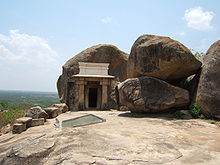
旃陀罗笈多·孔雀退休后皈依了耆那教,当时他放弃了王位和物欲,加入了一个流浪的耆那教僧侣团体。旃陀罗笈多是耆那教僧侣阿查尔亚·巴德拉巴胡的弟子。据说,在他最后的日子里,他在卡纳塔克邦的什拉瓦纳贝拉戈拉执行了严格的自我净化的耆那教萨莱克哈那(禁食至死)仪式。[77][76][115][75]阿育王的孙子三钵罗底也是耆那教教徒。三钵罗底受到像苏哈斯汀这样的耆那教僧侣的教义的影响,据说他在印度各地建造了125,000个耆那教寺庙。[116]今天在艾哈迈达巴德、维拉姆加姆、邬阇衍那和帕利塔纳等地,还能看到这些寺庙的遗存。根据一些传说,三钵罗底和阿育王一样,曾派信使和传教士前往希腊、波斯和中东传播耆那教,但迄今为止,这些传说尚没有被证实。[117][118]
因此,耆那教成为孔雀王朝统治下的一股重要的力量。旃陀罗笈多和三钵罗底为耆那教在印度南部的传播起到了重要的作用。据说,在他们的统治期间建造了数十万座寺庙和塔。
佛教
[编辑]

摩揭陀是帝国的中心,同时也是佛教的发源地。阿育王最初信奉婆罗门教,后来改信佛教;羯陵伽战争之后,他放弃了侵略扩张,也放松了《政事论》中对使用武力、强化治安、税收征收、打击叛乱等严厉措施。阿育王派他的儿子摩哂陀和女儿僧伽蜜多率领一个使团前往斯里兰卡,斯里兰卡国王帝沙对佛教教义非常着迷,并将佛教定为国教。阿育王向西亚、希腊和东南亚派遣了许多佛教使团,并建造寺院和学校,大力支持佛教书籍的出版。据资料记录,他在印度各地建造了多达84,000座佛塔,如桑吉村和摩诃菩提寺,并在阿富汗、泰国和包括西伯利亚在内的北亚地区提高了佛教的知名度。阿育王在首都附近召开了印度和南亚佛教教团的第三次集结,这次集结对佛教改革和传播有重大影响。印度商人普遍信奉佛教,并在孔雀帝国内传播佛教方面发挥了重要作用。[119]
社会
[编辑]孔雀王朝时期的南亚人口估计在1500到3000万之间。[120]根据蒂姆·戴森的说法,在孔雀帝国时期,定居在恒河平原的印度-雅利安人确立了种姓制度,越来越多的部落接收了种姓制度,在印度-雅利安语地区,妇女地位也不断下降,尽管“这些事态发展并未影响到生活在次大陆大部分地区的人们。”[121]
建筑遗迹
[编辑]
这一时期最重要的标志性建筑是在旃陀罗笈多·孔雀统治时期修建的巴塔利普特拉宫殿,遗迹位于现在巴特那的库姆哈尔。此地出土的宫殿遗迹,据认为是由几座建筑组成的,其中最重要的是一座木质的屋顶的巨大的柱廊。柱子排成几排,将柱廊划分为许多较小的方形区域。柱子共有80根,每根高约7米。据麦加斯梯尼所见,这座宫殿主要由木材建造,比苏萨和埃克巴坦那的宫殿更富丽堂皇,其镀金的柱子上装饰着金色的藤蔓和银色的鸟儿。这些建筑坐落在一个广阔的公园里,公园里布满了鱼塘,还有各种各样的观赏性树木和灌木。[122]考底利耶在《政事论》中,也详述了这一时期建造宫殿的方法。现存一些石柱的碎片和一根几乎完整的石柱,根据这些遗存,可以推断,阿育王时代建造了这些石柱取代了早期的木柱。
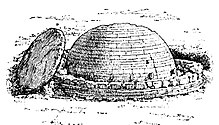
在阿育王时期,石雕艺术多种多样,有高耸的石柱、佛塔的栏杆、石狮和巨型人物雕像。在这段时期,石雕艺术取得了非常高的成就,即使是很小的石头碎片也达到了类似于精美珐琅的高光泽度。这一时期同样还是佛教建筑兴起的时期。阿育王建造了几座佛塔,这些佛塔共同特点是都拥有巨大的圆顶并且带有佛陀的雕像。The most important ones are located at Sanchi, Bharhut, Amaravati, Bodhgaya and Nagarjunakonda. The most widespread examples of Mauryan architecture are the Ashoka pillars and carved edicts of Ashoka, often exquisitely decorated, with more than 40 spread throughout the Indian subcontinent.[123][需要较佳来源]
The peacock was a dynastic symbol of Mauryans, as depicted by Ashoka's pillars at Nandangarh and Sanchi Stupa.[41]
| Maurya structures and decorations at Sanchi (3rd century BCE) | |
 Approximate reconstitution of the Great Stupa at Sanchi under the Mauryas. |
|
参考文献
[编辑]- ^ Smith, Vincent Arthur, The Oxford History of India: From the Earliest Times to the End of 1911, Clarendon Press: 104–106, 1920
- ^ Majumdar, R. C.; Raychaudhuri, H. C.; Datta, Kalikinkar, An Advanced History of India Second, Macmillan & Company: 104, 1950
- ^ 3.0 3.1 Schwartzberg, Joseph E. A Historical Atlas of South Asia, 2nd ed. (University of Minnesota, 1992), Plate III.B.4b (p.18) and Plate XIV.1a-c (p.145)
- ^ Hermann Kulke 2004,第69-70页.
- ^ Stein, Burton, A History of India, John Wiley & Sons: 74, 2010, ISBN 978-1-4443-2351-1,
In the past it was not uncommon for historians to conflate the vast space thus outlined with the oppressive realm described in the Arthashastra and to posit one of the earliest and certainly one of the largest totalitarian regimes in all of history. Such a picture is no longer considered believable; at present what is taken to be the realm of Ashoka is a discontinuous set of several core regions separated by very large areas occupied by relatively autonomous peoples.
- ^ Ludden, David, India and South Asia: A Short History, Oneworld Publications: 29–3, 2013, ISBN 978-1-78074-108-6,
The geography of the Mauryan Empire resembled a spider with a small dense body and long spindly legs. The highest echelons of imperial society lived in the inner circle composed of the ruler, his immediate family, other relatives, and close allies, who formed a dynastic core. Outside the core, empire travelled stringy routes dotted with armed cities. ... In most janapadas, the Mauryan Empire consisted of strategic urban sites connected loosely to vast hinterlands through lineages and local elites who were there when the Mauryas arrived and were still in control when they left.
- ^ 7.0 7.1 7.2 Coningham, Robin; Young, Ruth, The Archaeology of South Asia: From the Indus to Asoka, c.6500 BCE – 200 CE, Cambridge University Press: 451–466, 2015, ISBN 978-1-316-41898-7
- ^ Coningham, Robin; Young, Ruth, The Archaeology of South Asia: From the Indus to Asoka, c.6500 BCE – 200 CE, Cambridge University Press: 453, 2015, ISBN 978-1-316-41898-7
- ^ Dyson, Tim, A Population History of India: From the First Modern People to the Present Day, Oxford University Press: 16–17, 2018, ISBN 978-0-19-882905-8,
Magadha power came to extend over the main cities and communication routes of the Ganges basin. Then, under Chandragupta Maurya (c.321–297 bce), and subsequently Ashoka his grandson, Pataliputra became the centre of the loose-knit Mauryan 'Empire' which during Ashoka's reign (c.268–232 bce) briefly had a presence throughout the main urban centres and arteries of the subcontinent, except for the extreme south.
- ^ Nath sen, Sailendra. Ancient Indian History and Civilization. Routledge. 1999: 164.
- ^ 11.0 11.1 11.2 Bronkhorst, Johannes; Flood, Gavin. The Oxford History of Hinduism: Hindu Practice. Oxford University Press. July 2020: 68. ISBN 978-0-19-873350-8 (英语).
- ^ Omvedt, Gail. Buddhism in India: Challenging Brahmanism and Caste. SAGE Publications. 18 August 2003: 119. ISBN 978-0-7619-9664-4 (英语).
- ^ Smith, vincent A. The Oxford History Of India Part. 1-3, Ed. 4th. Oxford University Press. 1981: 99.
the only direct evidence throwing light ....is that of Jain tradition. ...it may be that he embraced Jainism towards the end of his reign. ...after much consideration I am inclined to accept the main facts as affirmed by tradition .... no alternative account exists.
- ^ Dalrymple, William. Nine Lives: In Search of the Sacred in Modern India. Bloomsbury Publishing. 2009-10-07. ISBN 978-1-4088-0341-7 (英语).
It was here, in the third century BC, that the first Emperor of India, Chandragupta Maurya, embraced the Jain religion and died through a self-imposed fast to the death,......
- ^ Keay, John. India: A History. Open Road + Grove/Atlantic. 1981: 85–86. ISBN 978-0-8021-9550-0 (英语).
- ^ 16.0 16.1 Long, Jeffery D. Historical Dictionary of Hinduism. Rowman & Littlefield. 15 April 2020: 255. ISBN 978-1-5381-2294-5 (英语).
- ^ Boyce, Mary; Grenet, F. A History of Zoroastrianism, Zoroastrianism under Macedonian and Roman Rule. BRILL. January 1991: 149. ISBN 978-90-04-29391-5 (英语).
- ^ Avari, Burjor (2007). India, the Ancient Past: A History of the Indian Sub-continent from C. 7000 BC to AD 1200 Taylor & Francis. ISBN 0415356156. pp. 188-189.
- ^ Taagepera, Rein. Size and Duration of Empires: Growth-Decline Curves, 600 B.C. to 600 A.D.. 社会科学史. 1979, 3 (3/4): 132. JSTOR 1170959. doi:10.2307/1170959.
- ^ Turchin, Peter; Adams, Jonathan M.; Hall, Thomas D. East-West Orientation of Historical Empires. Journal of World-Systems Research. December 2006, 12 (2): 223 [16 September 2016]. ISSN 1076-156X. (原始内容存档于20 May 2019).
- ^ 21.0 21.1 Dyson, Tim, A Population History of India: From the First Modern People to the Present Day, Oxford University Press: 16–17, 2018, ISBN 978-0-19-882905-8 Quote: "Magadha power came to extend over the main cities and communication routes of the Ganges basin. Then, under Chandragupta Maurya (c.321–297 bce), and subsequently Ashoka his grandson, Pataliputra became the centre of the Mauryan 'Empire' which during Ashoka's reign (c.268–232 bce) had a presence throughout the main urban centres and arteries of the entire subcontinent, except for the extreme southern end."
- ^ Ludden, David, India and South Asia: A Short History, Oneworld Publications: 29–30, 2013, ISBN 978-1-78074-108-6 |quote=The geography of the Mauryan Empire resembled a spider with a small dense body and long spindly legs. The highest echelons of imperial society lived in the inner circle composed of the ruler, his immediate family, other relatives, and close allies, who formed a dynastic core. Outside the core, empire travelled stringy routes dotted with armed cities. Outside the palace, in the capital cities, the highest ranks in the imperial elite were held by military commanders whose active loyalty and success in war determined imperial fortunes. Wherever these men failed or rebelled, dynastic power crumbled. ... Imperial society flourished where elites mingled; they were its backbone, its strength was theirs. Kautilya's Arthasastra indicates that imperial power was concentrated in its original heartland, in old Magadha, where key institutions seem to have survived for about seven hundred years, down to the age of the Guptas. Here, Mauryan officials ruled local society, but not elsewhere. In provincial towns and cities, officials formed a top layer of royalty; under them, old conquered royal families were not removed, but rather subordinated. In most janapadas, the Mauryan Empire consisted of strategic urban sites connected loosely to vast hinterlands through lineages and local elites who were there when the Mauryas arrived and were still in control when they left.
- ^ Hermann Kulke 2004,第xii, 448页.
- ^ Thapar, Romila. A History of India, Volume 1. Penguin Books. 1990: 384. ISBN 0-14-013835-8.
- ^ Keay, John. India: A History. Grove Press. 2000: 82. ISBN 978-0-8021-3797-5.
- ^ 26.0 26.1 R. K. Mookerji 1966,第31页.
- ^ Seleucus I ceded the territories of Arachosia (modern Kandahar), Gedrosia (modern Balochistan), and Paropamisadae (or Gandhara). Aria (modern Herat) "has been wrongly included in the list of ceded satrapies by some scholars ... on the basis of wrong assessments of the passage of Strabo ... and a statement by Pliny" (Raychaudhuri & Mukherjee 1996, p. 594).
- ^ John D Grainger 2014,第109页: Seleucus "must ... have held Aria", and furthermore, his "son Antiochos was active there fifteen years later".
- ^ Bhandari, Shirin. Dinner on the Grand Trunk Road. Roads & Kingdoms. 2016-01-05 [2016-07-19] (美国英语).
- ^ Hermann Kulke 2004,第67页.
- ^ Dyson, Tim, A Population History of India: From the First Modern People to the Present Day, Oxford University Press: 24, 2018, ISBN 978-0-19-882905-8 Quote: "Yet Sumit Guha considers that 20 million is an upper limit. This is because the demographic growth experienced in core areas is likely to have been less than that experienced in areas that were more lightly settled in the early historic period. The position taken here is that the population in Mauryan times (320–220 BCE) was between 15 and 30 million—although it may have been a little more, or it may have been a little less."
- ^ Ludden, David, India and South Asia: A Short History, Oneworld Publications: 28–29, 2013, ISBN 978-1-78074-108-6Quote: "A creative explosion in all the arts was a most remarkable feature of this ancient transformation, a permanent cultural legacy. Mauryan territory was created in its day by awesome armies and dreadful war, but future generations would cherish its beautiful pillars, inscriptions, coins, sculptures, buildings, ceremonies, and texts, particularly later Buddhist writers."
- ^ Dyson, Tim, A Population History of India: From the First Modern People to the Present Day, Oxford University Press: 19, 2018, ISBN 978-0-19-882905-8 Quote: "Accordingly, as tribal societies were encountered by the expanding Indo-Aryan societies, so the evolving caste system provided a framework within which—invariably at a low level—tribal people could be placed. For example, by the time of the Mauryan Empire (c.320–230 bce) the caste system was quite well established and the Aranyachará (i.e. forest people) were grouped with the most despised castes. ... The evolution of Indo-Aryan society in the centuries before c.200 bce not only saw increased segregation with respect to caste, it also seems to have seen increased differentiation with respect to gender. ... Therefore, by the time of the Mauryan Empire the position of women in mainstream Indo-Aryan society seems to have deteriorated. Customs such as child marriage and dowry were becoming entrenched; and a young women's purpose in life was to provide sons for the male lineage into which she married. To quote the Arthashāstra: 'wives are there for having sons'. Practices such as female infanticide and the neglect of young girls were possibly also developing at this time, especially among higher caste people. Further, due to the increasingly hierarchical nature of the society, marriage was possibly becoming an even more crucial institution for childbearing and the formalization of relationships between groups. In turn, this may have contributed to the growth of increasingly instrumental attitudes towards women and girls (who moved home at marriage). It is important to note that, in all likelihood, these developments did not affect people living in large parts of the subcontinent—such as those in the south, and tribal communities inhabiting the forested hill and plateau areas of central and eastern India. That said, these deleterious features have continued to blight Indo-Aryan speaking areas of the subcontinent until the present day."
- ^ "It is doubtful if, in its present shape, [the Arthashastra] is as old as the time of the first Maurya", as it probably contains layers of text ranging from Maurya times till as late as the 2nd century CE. Nonetheless, "though a comparatively late work, it may be used ... to confirm and supplement the information gleaned from earlier sources". (Raychaudhuri & Mukherjee 1996, pp. 246–247)
- ^ 35.0 35.1 35.2 35.3 35.4 Irfan Habib & Vivekanand Jha 2004,第14页.
- ^ 36.0 36.1 Singh, Upinder. A History of Ancient and Early Medieval India: From the Stone Age to the 12th Century. Pearson Education India. 2008. ISBN 9788131716779 (英语).
- ^ Annual Report Of Mysore 1886 To 1903.
- ^ Epigraphia Indica Vol.20. Achaeological Survey of India. 1920: 80 (英语).
- ^ D·C·萨卡尔. The Satavahanas and the Chedis. R·C·马宗达 (编). The Age of Imperial Unity. Bharatiya Vidya Bhavan. 1968: 215.
- ^ R. K. Mookerji 1966,第14页.
- ^ 41.0 41.1 R. K. Mookerji 1966,第15页.
- ^ H. C. Raychaudhuri 1988,第140页.
- ^ R. K. Mookerji 1966,第8页.
- ^ Sugandhi, Namita Sanjay. Between the Patterns of History: Rethinking Mauryan Imperial Interaction in the Southern Deccan. 2008: 88–89. ISBN 9780549744412.
- ^ Kosmin 2014,第31页.
- ^ Nath sen, Sailendra. Ancient Indian History and Civilization. Routledge. 1999: 162. ISBN 9788122411980.
- ^ Nath sen, Sailendra. Ancient Indian History and Civilization. Routledge. 1999: 130. ISBN 9788122411980.
- ^ :"Androcottus, when he was a stripling, saw Alexander himself, and we are told that he often said in later times that Alexander narrowly missed making himself master of the country, since its king was hated and despised on account of his baseness and low birth." Plutarch 62-3 Plutarch 62-3
- ^ :"He was of humble Indian to a change of rule." Justin XV.4.15 "Fuit hic humili quidem genere natus, sed ad regni potestatem maiestate numinis inpulsus. Quippe cum procacitate sua Nandrum regem offendisset, interfici a rege iussus salutem pedum ceieritate quaesierat. (Ex qua fatigatione cum somno captus iaceret, leo ingentis formae ad dormientem accessit sudoremque profluentem lingua ei detersit expergefactumque blande reliquit. Hoc prodigio primum ad spem regni inpulsus) contractis latronibus Indos ad nouitatem regni sollicitauit." Justin XV.4.15 互联网档案馆的存档,存档日期1 February 2016.
- ^ Hermann Kulke 2004,第69–70页.
- ^ Thapar 2013,第362–364页.
- ^ 52.0 52.1 Sen 1895,第26–32页.
- ^ Upinder Singh 2008,第272页.
- ^ Mookerji 1988,第28–33页.
- ^ Hemacandra 1998,第175–188页.
- ^ Mookerji 1988,第33页.
- ^ Malalasekera 2002,第383页.
- ^ Mookerji 1988,第33-34页.
- ^ Trautmann 1971,第43页.
- ^ Chandragupta Maurya and His Times, Radhakumud Mookerji, Motilal Banarsidass Publ., 1966, p.26-27 Mookerji, Radhakumud. Chandragupta Maurya and His Times. 1966 [2016-11-26]. ISBN 9788120804050. (原始内容存档于27 November 2016).
- ^ Mookerji 1988,第34页.
- ^ Roy 2012,第62页.
- ^ 63.0 63.1 From Polis to Empire, the Ancient World, C. 800 B.C.-A.D. 500. Greenwood Publishing. 2002 [16 August 2019]. ISBN 0313309426.
- ^ Kistler, John M. War Elephants. University of Nebraska Press. 2007: 67 [16 August 2019]. ISBN 978-0803260047.
- ^ s, deepak. Indian civilization. deepak shinde. 2016-10-25 (英语).
- ^ Kosmin 2014,第38页.
- ^ Arrian. Book 5. Anabasis.
Megasthenes lived with Sibyrtius, satrap of Arachosia, and often speaks of his visiting Sandracottus, the king of the Indians.
- ^ "In the royal residences in India where the greatest of the kings of that country live, there are so many objects for admiration that neither Memnon's city of Susa with all its extravagance, nor the magnificence of Ectabana is to be compared with them. ... In the parks, tame peacocks and pheasants are kept." Aelian, Characteristics of animals book XIII, Chapter 18, also quoted in The Cambridge History of India, Volume 1, p411
- ^ Romila Thapar (1961), Aśoka and the decline of the Mauryas, Volume 5, p.129, Oxford University Press. "The architectural closeness of certain buildings in Achaemenid Iran and Mauryan India have raised much comment. The royal palace at Pataliputra is the most striking example and has been compared with the palaces at Susa, Ecbatana, and Persepolis."
- ^ 70.0 70.1 70.2 Upinder Singh 2008,第331页.
- ^ Kosmin 2014,第32页.
- ^ Chatterjee, Suhas. Indian Civilization and Culture. M.D. Publications. 1998. ISBN 9788175330832 (英语).
- ^ Dikshitar, V. R. Ramachandra. The Mauryan Polity. Motilal Banarsidass. 1993. ISBN 9788120810235 (英语).
- ^ R. K. Mookerji 1966,第39–40页.
- ^ 75.0 75.1 Geoffrey Samuel 2010,第60页.
- ^ 76.0 76.1 Romila Thapar 2004,第178页.
- ^ 77.0 77.1 R. K. Mookerji 1966,第39–41页.
- ^ Srinivasachariar 1974,第lxxxvii页.
- ^ Vincent Arthur Smith. Asoka, the Buddhist emperor of India. Oxford: Clarendon Press. 1920: 18–19. ISBN 9788120613034.
- ^ Rajendralal Mitra. On the Early Life of Asoka. Proceedings of the Asiatic Society of Bengal (Asiatic Society of Bengal). 1878: 10.
- ^ Motilal Banarsidass. The Minister Cāṇakya, from the Pariśiṣtaparvan of Hemacandra. 菲莉丝·格兰诺夫 (编). The Clever Adulteress and Other Stories: A Treasury of Jaina Literature. 由Rosalind Lefeber翻译. 1993: 204–206. ISBN 9788120811508.
- ^ Kosmin 2014,第35页.
- ^ Alain Daniélou 2003,第108页.
- ^ Dineschandra Sircar 1971,第167页.
- ^ William Woodthorpe Tarn. The Greeks in Bactria and India. Cambridge University Press. 2010: 152. ISBN 9781108009416.
- ^ Mookerji Radhakumud. Asoka. Motilal Banarsidass. 1962: 8. ISBN 978-81-208-0582-8. (原始内容存档于10 May 2018).
- ^ 87.0 87.1 Alain Daniélou 2003,第109页.
- ^ Eugène Burnouf. Legends of Indian Buddhism. New York: E. P. Dutton. 1911: 59.
- ^ 89.0 89.1 89.2 89.3 S. N. Sen 1999,第142页.
- ^ "Three Greek ambassadors are known by name: Megasthenes, ambassador to Chandragupta; Deimachus, ambassador to Chandragupta's son Bindusara; and Dyonisius, whom Ptolemy Philadelphus sent to the court of Ashoka, Bindusara's son", McEvilley, p.367
- ^ India, the Ancient Past, Burjor Avari, pp. 108–109
- ^ Arthur Llewellyn Basham, History and doctrines of the Ājīvikas: a vanished Indian religion, pp. 138, 146
- ^ Anukul Chandra Banerjee, Buddhism in comparative light, p. 24
- ^ Beni Madhab Barua, Ishwar Nath Topa, Ashoka and his inscriptions, Volume 1, p. 171
- ^ Kashi Nath Upadhyaya. Early Buddhism and the Bhagavadgita. Motilal Banarsidass. 1997: 33. ISBN 9788120808805.
- ^ 菲茨杰拉德·霍尔 (编). The Vishnu Purana IV. 由H·H·威尔逊翻译. Trübner & Co. 1868: 188.
- ^ Allchin, F. R.; Erdosy, George. The Archaeology of Early Historic South Asia: The Emergence of Cities and States. Cambridge: Cambridge University Press. 1995: 306.
- ^ Edicts of Ashoka, 13th Rock Edict, translation S. Dhammika.
- ^ Thapar, Romila. Aśoka and the Decline of the Mauryas. Oxford Scholarship Online. 2012. ISBN 9780198077244. doi:10.1093/acprof:oso/9780198077244.003.0031.
- ^ Singh 2012,第131, 143页.
- ^ According to the Ashokavadana
- ^ Sir John Marshall (1990), "A Guide to Sanchi", Eastern Book House, ISBN 81-85204-32-2, p. 38
- ^ E. Lamotte, History of Indian Buddhism, Institut Orientaliste, Louvain-la-Neuve 1988 (1958)
- ^ Romila Thapar (1960), Aśoka and the Decline of the Mauryas, Oxford University Press, p. 200
- ^ Kangle, R. P. A Study. Motilal Banarsidass Publ. 1986. ISBN 978-81-208-0041-0 (英语).
- ^ Nath sen, Sailendra. Ancient Indian History and Civilization. Routledge. 1999: 160. ISBN 9788122411980.
- ^ Gabriel A, Richard. The Ancient World :Volume 1 of Soldiers' lives through history. Greenwood Publishing Group. 30 November 2006: 28. ISBN 9780313333484.
- ^ R. C. Majumdar 2003,第107页.
- ^ Kulke, Herman. History of India. Routledge. 2004: 79. ISBN 9780415329200.
- ^ Indian History. Allied Publishers. 1988. ISBN 9788184245684 (英语).
- ^ Narain Singh Kalota. India As Described By Megasthenes. 1978.
- ^ The Economic History of the Corporate Form in Ancient India. 互联网档案馆的存档,存档日期4 February 2016. University of Michigan.
- ^ CNG Coins 互联网档案馆的存档,存档日期27 August 2017.
- ^ Nath sen, Sailendra. Ancient Indian History and Civilization. Routledge. 1999: 164. ISBN 9788122411980.
- ^ Hermann Kulke 2004,第64-65页.
- ^ John Cort 2010,第142页.
- ^ John Cort 2010,第199页.
- ^ Tukol, T. K. Jainism in South India. (原始内容存档于4 March 2016).
- ^ Jerry Bentley, Old World Encounters: Cross-Cultural Contacts in Pre-Modern Times (New York: Oxford University Press), 46
- ^ Dyson, Tim, A Population History of India: From the First Modern People to the Present Day, Oxford University Press: 24, 2018, ISBN 978-0-19-882905-8 Quote: "Yet Sumit Guha considers that 20 million is an upper limit. This is because the demographic growth experienced in core areas is likely to have been less than that experienced in areas that were more lightly settled in the early historic period. The position taken here is that the population in Mauryan times (320–220 bce) was between 15 and 30 million—although it may have been a little more, or it may have been a little less."
- ^ Dyson, Tim, A Population History of India: From the First Modern People to the Present Day, Oxford University Press: 19, 2018, ISBN 978-0-19-882905-8 Quote: "... there seems to have been an interplay between the developing system of caste on the one hand, and the increased frequency with which 'tribal' societies were confronted on the other. In this context, castes and tribes can be seen as being broadly analogous-esepcially in that they tend to marry endogenously and maintain their own collective identities.62 Accordingly, as tribal societies were encountered by the expanding Indo-Aryan societies, so the evolving caste system provided a framework within which—invariably at a low level—tribal people could be placed. For example, by the time of the Mauryan Empire (c.320–230 bce) the caste system was quite well established and the Aranyachará (i.e. forest people) were grouped with the most despised castes [...] The evolution of Indo-Aryan society in the centuries before c.200 bce not only saw increased segregation with respect to caste, it also seems to have seen increased differentiation with respect to gender ... Therefore, by the time of the Mauryan Empire the position of women in mainstream Indo-Aryan society seems to have deteriorated. Customs such as child marriage and dowry were becoming entrenched; and a young women's purpose in life was to provide sons for the male lineage into which she married. To quote the Arthashāstra: 'wives are there for having sons'. Practices such as female infanticide and the neglect of young girls were possibly also developing at this time, especially among higher caste people. Further, due to the increasingly hierarchical nature of the society, marriage was possibly becoming an even more crucial institution for childbearing and the formalization of relationships between groups. In turn, this may have contributed to the growth of increasingly instrumental attitudes towards women and girls (who moved home at marriage). It is important to note that, in all likelihood, these developments did not affect people living in large parts of the subcontinent—such as those in the south, and tribal communities inhabiting the forested hill and plateau areas of central and eastern India. That said, these deleterious features have continued to blight Indo-Aryan speaking areas of the subcontinent until the present day."
- ^ "L'age d'or de l'Inde Classique", p23
- ^ "L'age d'or de l'Inde Classique", p22
- ^ Described in Marshall p.25-28 Ashoka pillar.



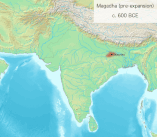



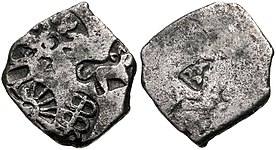

![孔雀帝国硬币(舍利输迦皇帝时期,大约公元前207-公元前194年)[113]](http://upload.wikimedia.org/wikipedia/commons/thumb/9/98/Mauryan_Empire._temp._Salisuka_or_later._Circa_207-194_BC.jpg/310px-Mauryan_Empire._temp._Salisuka_or_later._Circa_207-194_BC.jpg)
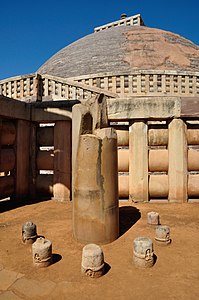

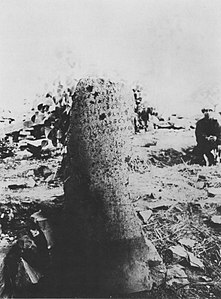
![The capital nowadays.[124]](http://upload.wikimedia.org/wikipedia/commons/thumb/f/f5/Sanchi_capital_right_side_view.jpg/181px-Sanchi_capital_right_side_view.jpg)